Which Image is Your Favorite?
Please leave a comment and let us know why you made your choice.
What’s Up?
My keynote went perfectly for 30 minutes. With the expensive, high quality, ceiling mounted projector, the images looked bright, the color was perfect, and the audience was enraptured with my stories. Then the expensive, high quality, ceiling mounted projector decided to go on vacation. After fifteen minutes of trying to fix the expensive, high quality, ceiling mounted projector, we went to the back-up projector. The images looked dull with a big green cast. We could have tried to fix the color cast, but I wanted to go on. So I did. I was glad to quickly have the audience back under my spell. The program was well-received.
We learned later from the repair tech that all we needed to do to reboot the projector was to press the space bar on my MacBook Pro … you gotta love it.
After attending the EXPO reception at 4:00pm, Eric Bowles and I headed back to Jekyll Point for a 2 1/2-hour shoot. The wind was howling from the southwest and the sand was blowing. After walking to the point proper, about 1 1/2-miles, we enjoyed lots of action with a large flock of Black Skimmers and dozens of Royal Terns and Laughing Gulls. My best stuff was on the terns. It has been quite chilly here — in the very low 50°s the last two mornings. I wore both a lightweight hoodie and a field shirt on our walk late yesterday afternoon and was glad to discover a pair of light gloves in my pocket on the way back to the car.
Today is Saturday 9 April 2022. I will be doing my second GNPA keynote — Lessons from the Field, at 10:00am. Wherever you are and whatever you are doing, I hope that you too have a great day. This blog post took about 90 minutes to prepare and makes twenty-nine days in a row with a new one.
Please remember to use the B&H and Amazon links that are found on most blog pages and to use the BIRDSASART discount code at checkout when purchasing your new gear from Bedfords. Please, also, consider joining a BAA IPT. You will be amazed at how much you will learn …
The SONY Alpha a1 Set-up Guide and Info Group: $150.00 (or Free)
The SONY Alpha a1 Set-up Guide and Info Group is going great guns as more and more folks chime in with thoughtful questions and experience-based answers. As the a1 is becoming more readily available, more and more folks are getting their hands on this amazing body. By early April, the group was up to an astounding 113 lucky and blessed folks. Early on, we discussed the myriad AF options. I gave my opinion as to the best one for flight and general bird photography. The best news is that everyone in the group receives an e-mail that includes a .DAT file with my a1 settings on it, and explicit directions on how to load my settings onto your a1; talk about convenience! I am now offering a .DAT file compatible with firmware update 1.20. Your entry into the group includes a consolidated Sony a1 CAMSETA2 INFO & GUIDE. New a1 folks will now receive three e-mails instead of the previous 28! You will see new e-mails as they are published. Simply put, this e-mail guide is an incredible resource for anyone with an a1.
All who purchased their Alpha 1 bodies via a BAA affiliate link — B&H or Bedfords — will receive a free Sony Alpha a1 Set-Up Guide and free entry into the Info Updates group after shooting me their receipts via e-mail. (Note: it may take me several days to confirm B&H orders.). Others can purchase their guide here in the BAA Online Store.
|
|
|
This image was created on 7 April 2022 at Jekyll Point, Jekyll Island, GA. I used the hand held Sony FE 200-600mm f/5.6-6.3 G OSS lens (at 407mm) and The One, the Sony Alpha 1 Mirrorless digital camera. ) The exposure was determined using Zebra technology with ISO on the Thumb Dial. ISO 500: 1/3200 second at f/6.3 (wide open) in Manual Mode. AWB at 5:41:39pm on a clear afternoon. RawDigger showed the exposure to be 1/3-stop under. Tracking: Zone AF-C performed perfectly. Be sure to click on the image to enjoy a high-res version. Image #1: Royal Tern in flight “All Angles”
|
A Spring Beach Walk in Southern Georgia With Almost No Laughing Gulls Present!
As I mentioned in yesterday’s post, I led a photo workshop to Jekyll Point on Thursday afternoon and was astounded at how few birds there were on the beach after the storm. We had zero skimmers, a few dozen Royal Terns, and a grand total of less than ten Laughing Gulls. Most days in spring you would expect to see hundreds of the gulls. Nonetheless, the group learned a ton, especially about the importance of wind direction and sky conditions with regards to bird photography. One of the very best compliments I ever received after another session that featured very few birds was this: “Artie, you could teach nature photography in an empty mop closet.”
As Royal Terns were the best available (and only) subjects, we concentrated on them. They are quite handsome in breeding plumage. In Image #1, I love the angled wing position flight pose.
|
|
|
This image was created on 7 April 2022 at Jekyll Point, Jekyll Island, GA. I used the hand held Sony FE 200-600mm f/5.6-6.3 G OSS lens (at 407mm) and The One, the Sony Alpha 1 Mirrorless digital camera. ) The exposure was determined using Zebra technology with ISO on the Thumb Dial. ISO 500: 1/3200 second at f/6.3 (wide open) in Manual Mode. AWB at 5:56:49pm on a clear afternoon. RawDigger showed the exposure to be 1/3-stop under. Tracking: Zone AF-C performed perfectly. Be sure to click on the image to enjoy a high-res version. Image #2: Royal Tern shaking off water in flight
|
Almost Missed This One …
I did not see this incoming tern shaking off water in flight until it was just about done ruffling. I raised my 2-6 quickly, got on the bird ASAP, and fired off ten frames. Only the first image was interesting. The rest featured the bird in flat flight. The first one needed a 3° CW rotation. I used Content Aware Crop as detailed in Digital Basics II.. Folks at the GNPA EXPO have been amazed by this technique even though they own Photoshop. In addition, I replaced the bird’s eye with one from the third frame in the series. That also as detailed in DB II along with tons of other great Photoshop tips.
|
|
|
This image was created on 7 April 2022 at Jekyll Point, Jekyll Island, GA. I used the hand held Sony FE 200-600mm f/5.6-6.3 G OSS lens with the Sony FE 1.4x Teleconverter (at 840mm) and The One, the Sony Alpha 1 Mirrorless digital camera. ) The exposure was determined using Zebra technology with ISO on the Thumb Dial. ISO 500: 1/1600 second at f/9 (wide open) in Manual Mode. AWB at 6:36:53pm on a clear afternoon. RawDigger showed the exposure to be 1/3-stop under. Tracking: Zone AF-C performed perfectly. Be sure to click on the image to enjoy a high-res version. Image #3: Royal Tern pair pano
|
Creating a Content Aware Crop Panorama
As the bird on our left was too close to the edge of the frame, I again used Content Aware Crop, this time to add canvas left. Tip: be sure to choose W x H x Resolution from the Crop Tool drop-down menu. As the expanses of sky above and foreground sand did not add anything to a photo of two birds standing rather far apart, creating a pano seemed the obvious way to go. I like that the ruffling bird seems to be the star of the show.
The Ankle-Pod Technique
This image was created by working off the tilted rear screen using the ankle-pod technique. While seated and holding the lens in my left hand, I bend my left leg at the knee and place the back of my left hand on my ankle. My right hand holds the body and my reading glasses allow me to see the level and the AF points at work — I almost always use Tracking: Zone. You are at a great disadvantage if the bird takes off. 🙂 I went to my ankle for this image as placing the lens very near the ground hid the bird’s feet behind the o-o-f sand.
|
|
|
This image was created on 7 April 2022 at Jekyll Point, Jekyll Island, GA. I used the hand held Sony FE 200-600mm f/5.6-6.3 G OSS lens (at 216mm) and The One, the Sony Alpha 1 Mirrorless digital camera. ) The exposure was determined using Zebra technology with ISO on the Thumb Dial. ISO 500: 1/1000 second at f/16 (stopped down 2 2/3 stops) in Manual Mode. AWB at7:33:19 pm on a clear afternoon. RawDigger showed the exposure to be 1/3-stop under. Manual focus with focus peaking. Be sure to click on the image to enjoy a high-res version. Image #4: Golden sand patterns at sunset
|
Sony 200-600 Usability and Versatility
Being able to make some very good images while leaving the 600mm f/4 and a tripod behind and taking only the 200-600 gives me great pleasure. Hand holding the 2-6 makes it fast and easy to get in position and opt for the very best perspective. As for versatility, note that the focal lengths for today’s four images ranged from 216 to 840mm. As you have seen here often, the 2-6 with the 1.4X TC is a viable combination. At present, if you are using another system you need to strongly consider going to the 200-600 with either an a9II or an Alpha 1. Did I forget to mention that once you learn to set and use Zebras correctly and put ISO on the Thumb Dial, you will be coming up with perfect and near perfect exposures quickly, easily, and consistently?
|
|
|
Fort DeSoto in spring is rife with tame birds, many in full breeding plumage. Click on the composite to enjoy a larger version. Clockwise from upper left around to center: Laughing Gull landing on head of Brown Pelican, Laughing Gull in flight, Reddish Egret sunrise silhouette, Great Blue Heron with needlefish, Yellow-crowned Night Heron with ghost crab, Roseate Spoonbill, Sanderling in breeding plumage, and white morph Reddish Egret in glorious breeding plumage. |
The 2022 DeSoto Spring IPT/April 26 through the morning session on April 29, 2020. 3 1/2 DAYS: $2099.00. Limit: 6 photographers/Openings 2
Fort DeSoto, located just south of St. Petersburg, FL, is a mecca for breeding terns and gulls and wading birds in spring. Migrant shorebirds are in abundance, and many are exceedingly tame. We should have great chances on Royal and Sandwich Terns and both white- and dark-morph Reddish Egrets. Great Egret, Snowy Egret, Great Blue Heron, Tricolored Heron, and White Ibis are easy as well and we will almost surely come up with a tame Yellow-crowned Night-Heron or two along with some American Oystercatchers. We will enjoy lots of great flight photography.
|
|
|
Again, Fort DeSoto in spring is rife with tame birds, most in breeding plumage. Click on the composite to enjoy a larger version. Clockwise from upper left around to center: Laughing Gull in flight, Yellow-crowned Night-Heron, Sandwich Terns copulating, Roseate Spoonbill, Great Egret with reflection, breeding plumage Short-billed Dowitcher, American Oystercatcher, Royal Tern, white morph Reddish Egret, and Snowy Egret in marsh. |
Lots of Tame Birds
We will also get to photograph a variety of other shorebirds including Black-bellied, Semipalmated, Wilson’s, and Piping Plovers, Willet, Dunlin, Short-billed Dowitcher, most especially, Red Knot with many individuals in their handsome breeding plumages. In spring the T-shaped peninsula and the newly formed sandbar, Outback Key, are literally packed with avian treasures.
With luck, we might get to photograph one of Florida’s most desirable species: Roseate Spoonbill. And we will almost surely get to do some Brown Pelican flight photography. With luck, they will have Laughing Gulls landing on their heads. And though not guaranteed, Wood Stork might well be expected. And we will be on the lookout for a migrant passerine fallout in the event of a thunderstorm or two.
|
|
|
Yes, Fort DeSoto in spring is rife with tame birds, most in breeding plumage. Click on the composite to enjoy a larger version. Clockwise from upper left around to center: breeding plumage Dunlin, dark morph Reddish Egret displaying, Laughing Gull vertical front-end portrait, Laughing Gull with prey item, landing on head of Brown Pelican, breeding plumage Royal Tern displaying, Royal Terns — pre-copulatory stance, Laughing Gulls copulating, Laughing Gull head portrait, breeding plumage Sandwich Tern with fish, and a rare treat, a breeding plumage White-rumped Sandpiper. |
What You Will Learn
On the DeSoto IPT you will learn the following:
- 1- The basics and fine points of digital exposure; how to get the right exposure every time after making a single test exposure (or before if you are using SONY gear).
- 2- How and why to work in Manual mode (even if you’re scared of it).
- 3- How to approach free and wild birds without disturbing them.
- 4- Lots about bird behavior and how to use that knowledge to help you create better images.
- 5- To age and identify many species of shorebirds including sandpipers, plovers, dowitchers, and possibly yellowlegs.
- 6- To spot good situations and to choose the best perspective.
- 7- To see, evaluate, and understand the light.
- 8- To design pleasing images by mastering your camera’s AF system.
- 9- And perhaps most importantly, to evaluate wind and sky conditions and understand how they affect bird photography.
- 10- How and when to access the magical sandbar safely.
- 11- More than you could ever imagine.
|
|
|
You’ve got it by now! Fort DeSoto in spring is rife with tame birds, most in breeding plumage. Click on the composite to enjoy a larger version. Clockwise from upper left around to center: Roseate Spoonbill, immature Brown Pelican in flight, the heron/egret hybrid, American Oystercatcher feeding, immature Royal Tern on railing, Great Egret morning silhouette, Black Skimmer in surf, and underside head portrait of Great Blue Heron. |
Morning sessions will run at least three hours, afternoon sessions 2 1/2. There is never a set schedule on an IPT — we adapt to the conditions. On cloudy morning when the photography is excellent, we may opt to extend the morning session and skip the afternoon, especially if the afternoon weather is not looking too good. There will be a Photoshop/image review session after lunch (included) each day. That will be followed by Instructor Nap Time. This IPT will run with only a single registrant (though that is not likely to happen). The best airport is Tampa (TPA). Once you register, you will receive an e-mail with lodging information. Do know that it is always best if IPT folks stay in the same general area — Gulfport in this case, rather than at home or at a friend’s place a good distance away.
Folks attending this IPT will be out in the field early and stay late to take advantage of sunrise and sunset colors; this is pretty much a staple on almost all BIRDS AS ART Instructional Photo-Tours. Doing so will often present unique photographic opportunities, opportunities that will be missed by those who need their beauty rest and those who need to get home for a proper dinner. I really love it when I am leaving the beach at 9:30am on a sunny morning after a great session just as a carful or two of well-rested photographers are arriving … We will be getting wet.
Credit cards are OK for your $500 deposit. You can register by calling Jim or Jennifer during weekday business hours at 863-692-0906 with a credit card in hand. After you leave the deposit, you will receive an e-mail with your balance statement and instructions for sending your balance check. If you wish to pay in full right off the bat, you can make your check out to BIRDS AS ART and send it via US mail here: BIRDS AS ART, PO BOX 7245, Indian Lake Estates, FL 33855. You will receive a confirmation e-mail with detailed instructions, and clothing and gear advice a month before the trip. Please shoot me an e-mail if you plan to register or if you have any questions.
Typos
With all blog posts, feel free to e-mail or to leave a comment regarding any typos or errors.

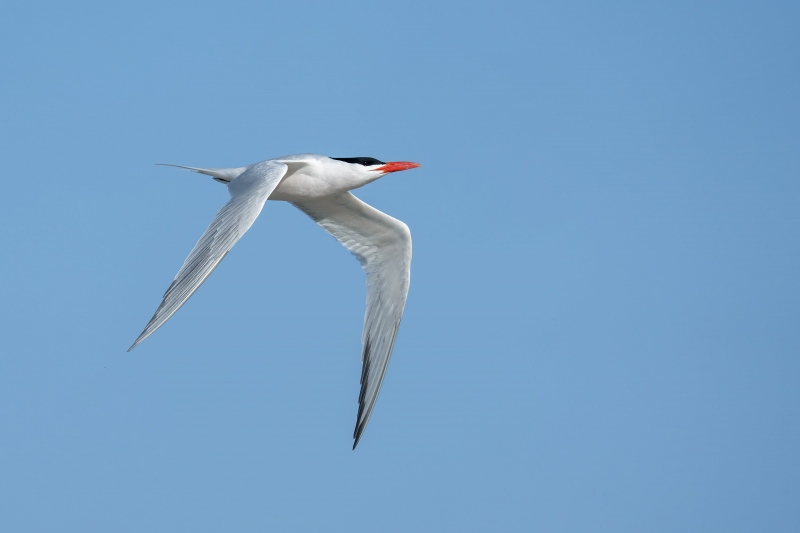
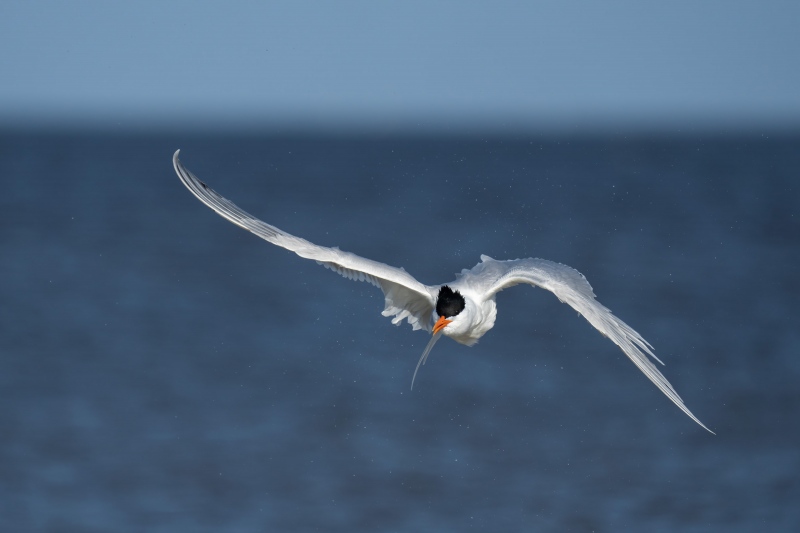
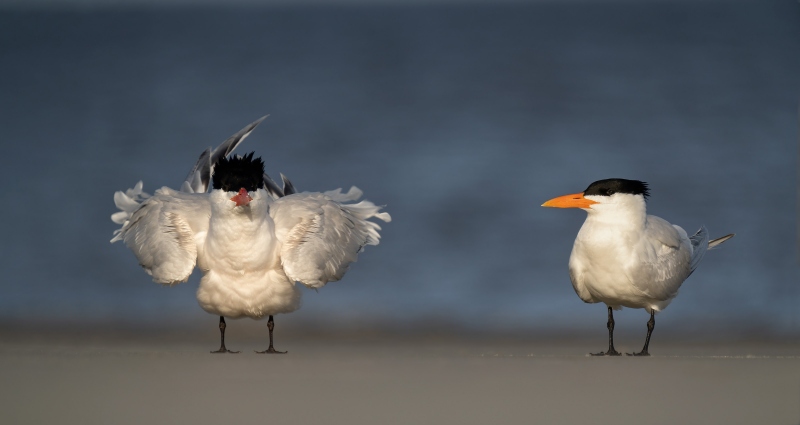
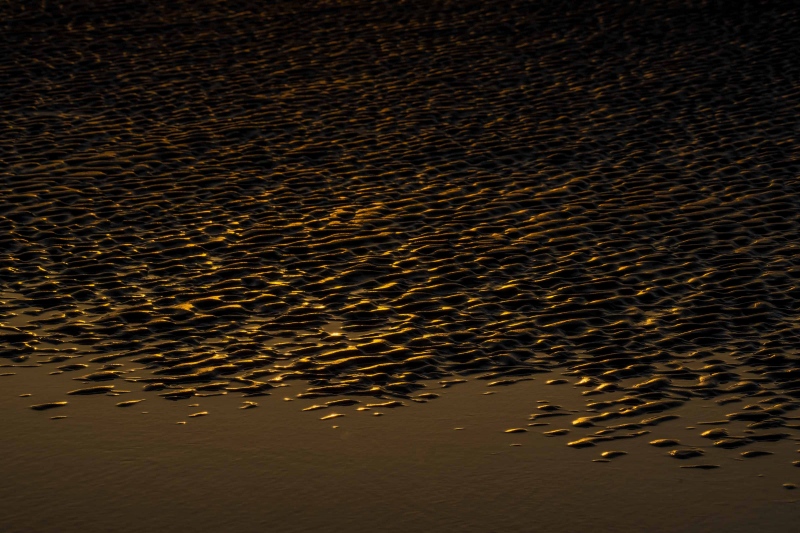
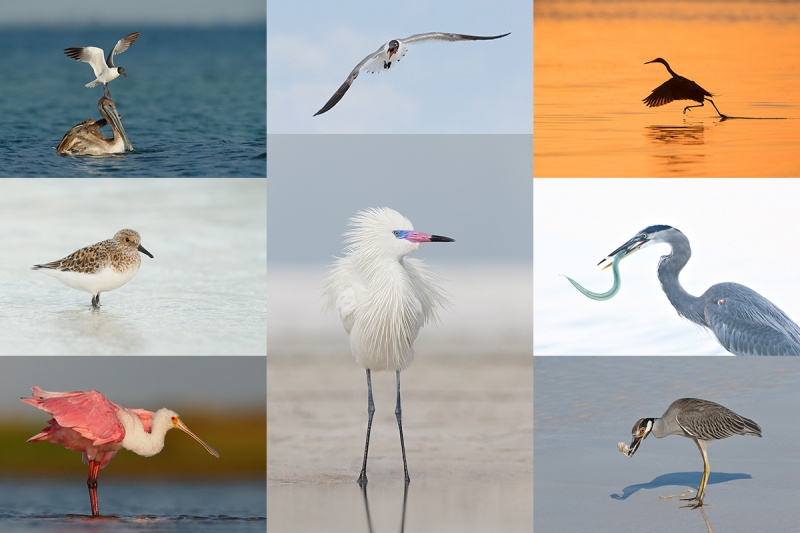
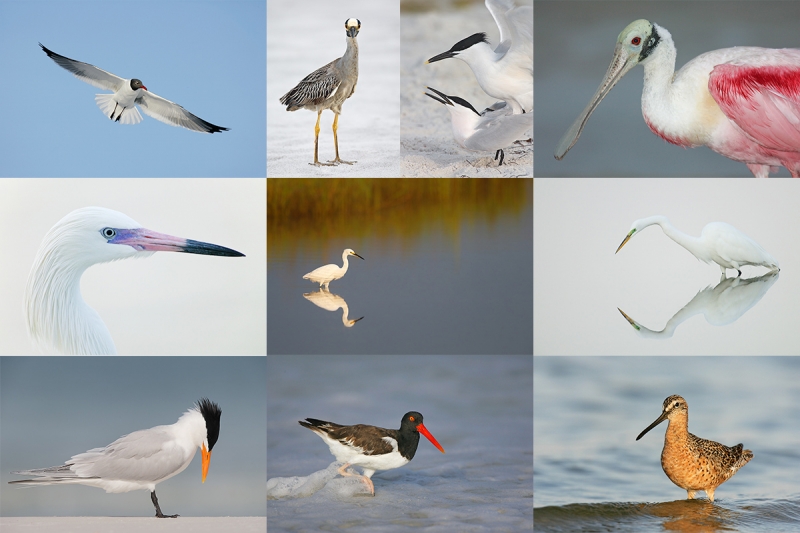
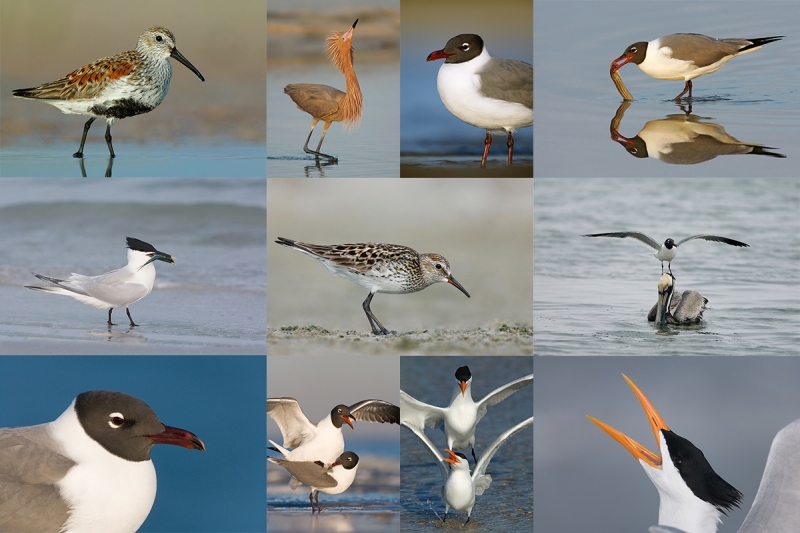
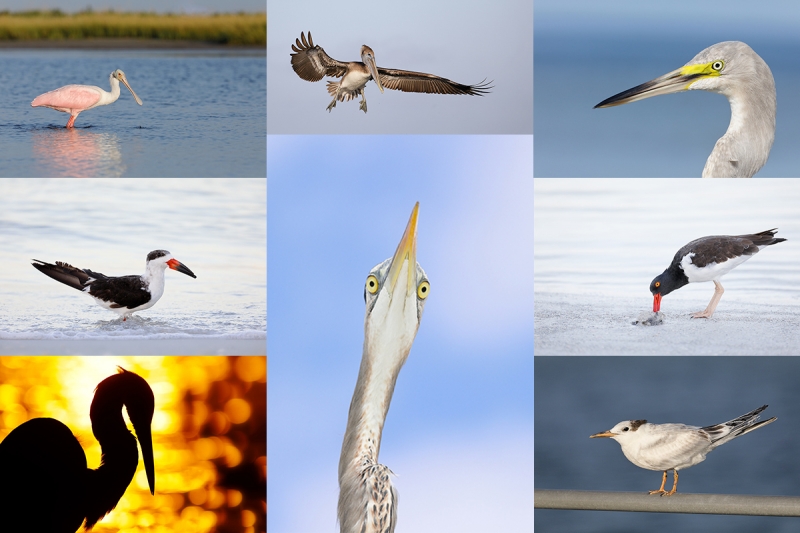













It seems 200-600 is most used lens for you. . . why not 600 f4? Rgds!
Lighter, small and easier to handle, more versatile, closer focus.
with love, artie
#3– What a great photo!
Number 3 is my favorite, it has something to do with a mop closet and being under your spell.
I loved #1 and thought for sure it would be my favorite, until I saw #3 — which made me laugh.
I’m sure the bird on the right is thinking, “Why do you always have to make such a big deal about flapping your wings?”
Adding canvas on the ruffling shot turned out really nice!